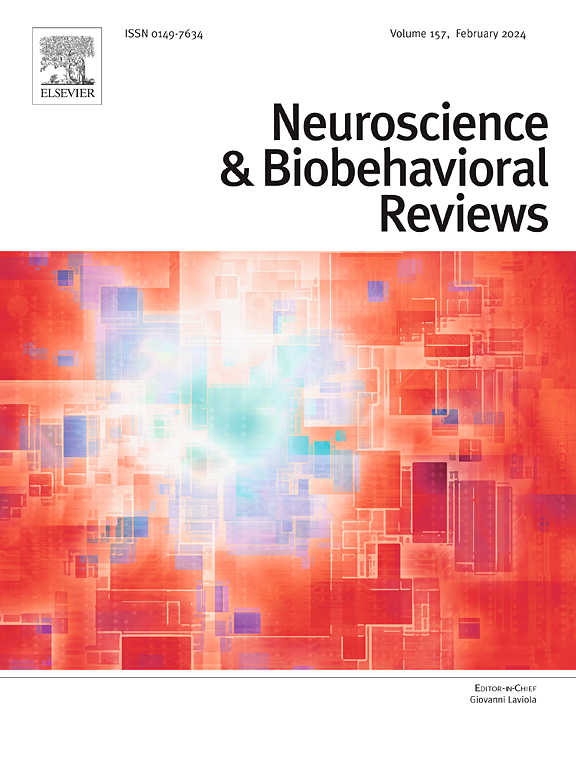The effects of non-pharmacological interventions on vagally-mediated heart rate variability (vmHRV) in individuals with depression: A systematic review and meta-analysis
IF 7.9
1区 医学
Q1 BEHAVIORAL SCIENCES
引用次数: 0
Abstract
Objectives
This study seeks to explore the impact of non-pharmacological interventions (NPIs) on vagally-mediated heart rate variability (vmHRV) in subjects experiencing depression. Additionally, it aims to delineate the relationship between vmHRV alterations and the severity of depressive symptoms.
Methods
Search was systematically performed on RCTs studies across various databases. These included Embase, the Cochrane Central Register of Controlled Trials, Medline via EBSCO, PsycINFO accessed through ProQuest, and the Web of Science, capturing all entries until March 11, 2024.
Results
The analysis revealed that NPIs generally exerted small to moderate beneficial effects on cardiac parasympathetic nervous system (PNS) markers such as the root mean square of successive differences (RMSSD) ([SMD] = 0.266, 95 % confidence interval [CI] 0.029–0.503) and high-frequency power (HF) (SMD = 0.178, 95 % CI 0.018–0.337). Specifically, mind-body exercises demonstrated moderate to large enhancements in RMSSD (SMD = 0.689, 95 % CI 0.265–1.112) and a moderate improvement in HF (SMD = 0.498, 95 % CI 0.134–0.863) immediately following the interventions. Conversely, psychological interventions did not show significant immediate post-intervention vmHRV enhancements; however, subsequent assessments revealed a moderate increase in HF (SMD = 0.477, 95 % CI 0.177–0.786) during short-term follow-ups. Moreover, substantial correlations were observed between vmHRV improvements and reductions in depression severity.
Conclusions
Our findings indicated that NPIs effectively enhance vmHRV and reduce depressive symptoms. This underscores the effectiveness of both mind-body exercises and psychological interventions. Furthermore, alterations in vmHRV may serve as viable predictors for the success of depression treatments.
非药物干预对抑郁症患者迷走神经介导的心率变异性(vmHRV)的影响:系统回顾和荟萃分析
目的:本研究旨在探讨非药物干预(npi)对抑郁症受试者迷走神经介导的心率变异性(vmHRV)的影响。此外,它旨在描述vmHRV改变与抑郁症状严重程度之间的关系。方法:系统地检索不同数据库的随机对照试验研究。这些包括Embase、Cochrane中央对照试验注册、通过EBSCO访问的Medline、通过ProQuest访问的PsycINFO和Web of Science,捕获到2024年3月11日之前的所有条目。结果:分析显示,npi对心脏副交感神经系统(PNS)指标如连续差异均方根(RMSSD) ([SMD] = 0.266, 95%可信区间[CI] 0.029 ~ 0.503)和高频功率(HF) (SMD = 0.178, 95%可信区间[CI] 0.018 ~ 0.337)一般具有小到中度的有益作用。具体来说,在干预之后,心身锻炼显示RMSSD有中等到较大的改善(SMD = 0.689, 95% CI 0.265至1.112),HF有中等程度的改善(SMD = 0.498, 95% CI 0.134至0.863)。相反,心理干预并没有在干预后立即显示显著的vmHRV增强;然而,随后的评估显示,在短期随访期间,HF中度增加(SMD = 0.477, 95% CI 0.177至0.786)。此外,观察到vmHRV的改善与抑郁严重程度的降低之间存在实质性的相关性。结论:我们的研究结果表明npi可以有效地提高vmHRV并减轻抑郁症状。这强调了身心锻炼和心理干预的有效性。此外,vmHRV的改变可能作为抑郁症治疗成功的可行预测因素。
本文章由计算机程序翻译,如有差异,请以英文原文为准。
求助全文
约1分钟内获得全文
求助全文
来源期刊
CiteScore
14.20
自引率
3.70%
发文量
466
审稿时长
6 months
期刊介绍:
The official journal of the International Behavioral Neuroscience Society publishes original and significant review articles that explore the intersection between neuroscience and the study of psychological processes and behavior. The journal also welcomes articles that primarily focus on psychological processes and behavior, as long as they have relevance to one or more areas of neuroscience.

 求助内容:
求助内容: 应助结果提醒方式:
应助结果提醒方式:


